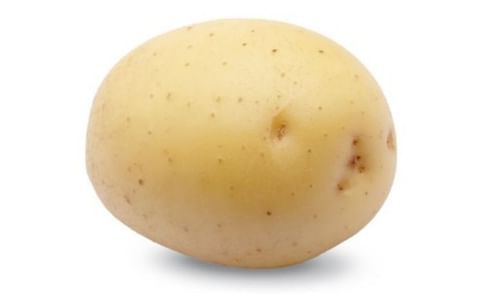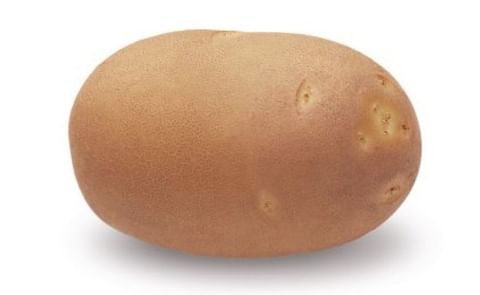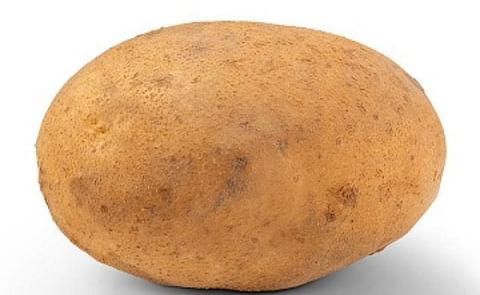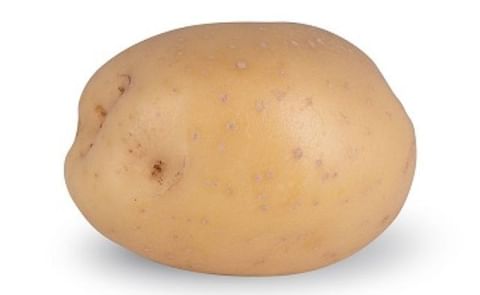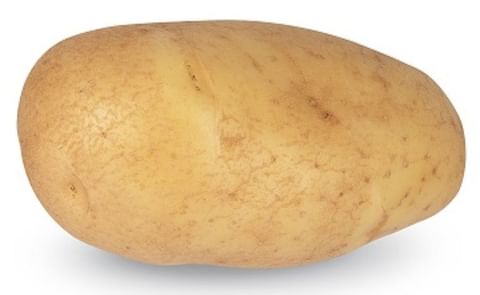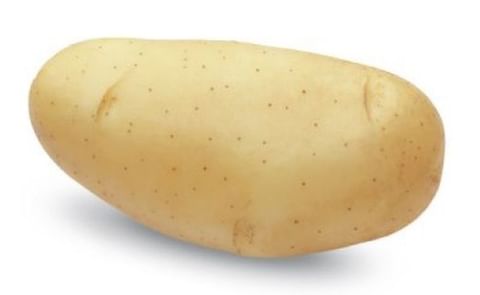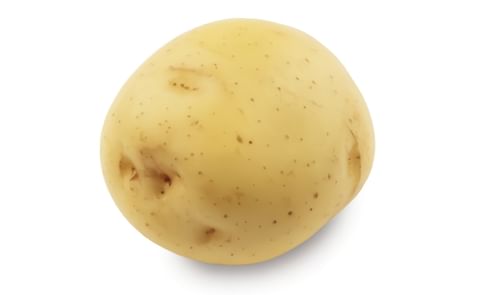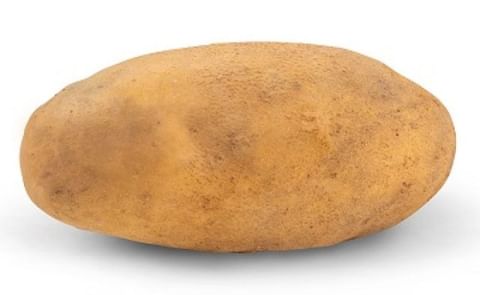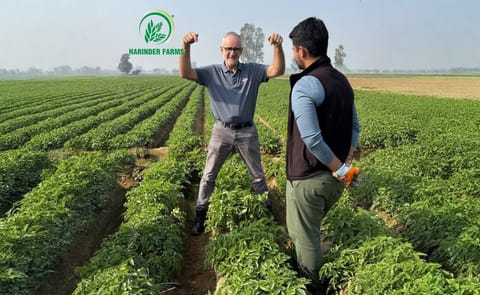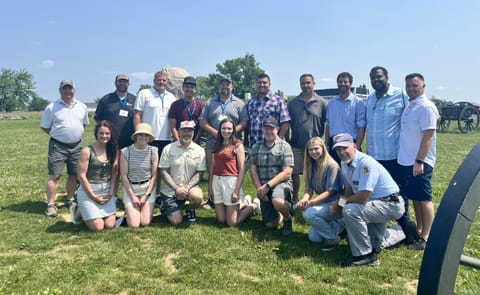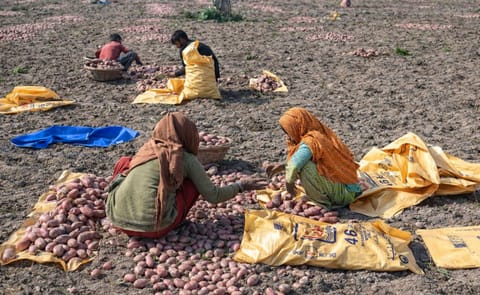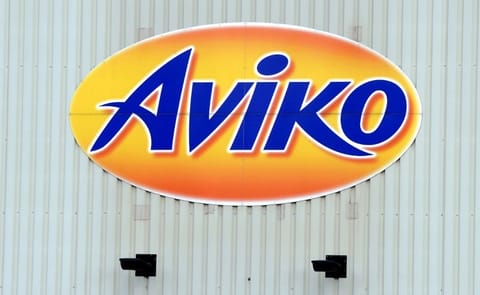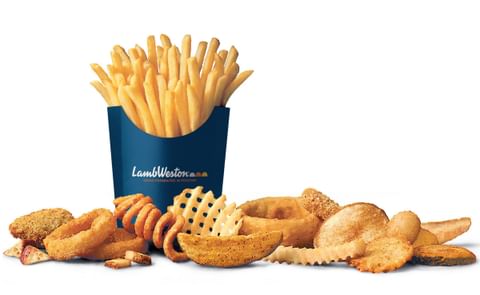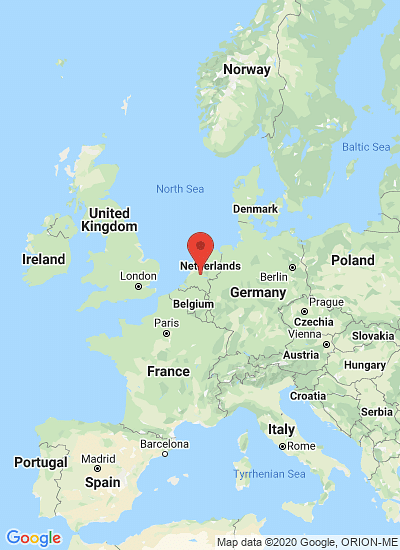The Dutch royal couple were given a tour of HZPC
The Dutch seed potato sector is prospering

By mid-March, Hans Huistra, CEO of the Royal HZPC Group, had done a good deal of driving on Dutch highways. He rushed from meeting to meeting, sharing the good news that last season's average prices will be historically high with affiliated seed potato growers.
Between two of these information sessions, the CEO of this potato breeder and seed potato supplier with global operations took a moment to talk with Primeur. He speaks with pride of the company's local roots and international reach, Dutch seed potato growers' enormous skill and drive, and the Royal HZPC Group's R&D center's progressive nature.
Hello Hans. Thank you for making time for Primeur.
Hans Huistra:
"You're welcome. Yes, I'm quite busy. Last week, I was in Groningen, Friesland, and Noordoostpolder; yesterday, I was in Zeeland. And today, I'm addressing growers in North Holland and Texel. There's a good turnout every time, and it's nice to see several generations there, not just the older growers."
Seed potato growers seem to have had another good season regarding received prices.
Hans Huistra:
"Undoubtedly. We announced that the estimated average price, across all varieties and sizes, will be €61.50 per 100 kilos of seed potatoes. That's even better than last year when prices were also historically high. Last year, that figure started with a five for the first time; this year, it's with a six. It remains a crop that demands much know-how and skill, and our growers always invest plenty of energy in it. That should be rewarded with good prices."
You mentioned the younger generation. Do you see a willingness from them to invest in this crop?
Hans Huistra:
"The new generation certainly isn't blind to the many challenges like the climate, high property prices, disease pressure, and complicated regulations. Not all growers do equally well every year; that much is clear. In Zeeland, in particular, last spring's rain negatively affected yields. But all the young growers I've recently spoken to see the opportunities and possibilities of this crop. The good average sales price proves that."
Has the seed potato acreage in the Netherlands not been under slight pressure in recent years?
Hans Huistra:
"Indeed, it has. But all destinations have been finalized, and planting has begun, so we should see some growth in the Netherlands this year. This upward movement is also prevalent within our group."
Do you fear increased competition if your seed potato prices rise?
Hans Huistra:
"It's a balancing act. Seed potatoes are a significant cost factor for ware potato growers. High quality, though, always pays off. Dutch seed potatoes are still highly sought after worldwide. And the market ultimately determines the prices. Our business is well spread across the four seed potato categories we're active in: traditional exports, ware potatoes for European retail, fries, and chips. We don't do starch potatoes. Surrounding markets are, of course, a consideration, but the market as a whole is expanding, which makes us confident about the future."
But, is it not becoming too expensive for countries in, say, North and East Africa?
Hans Huistra:
"I visited our team in Tanzania two weeks ago. Unlike Kenya, which doesn't allow seed potato imports, the Tanzanian market isn't segregated. Our varieties are popular in Tanzania. Specialized growers propagate the Dutch basic materials before the seed potatoes eventually end up with ware potato growers. This intermediate step means local growers can pay the seed potato prices, even though they're still slightly pricier than local seed potatoes."
"However, our team is conducting extensive training programs in Swahili to show that our varieties' two to three times higher yields more than compensate for that. And that message is catching on with small-scale growers. As I said, quality always pays for itself. In a large market like Egypt, you do see France and Scotland supplying seed potatoes."
"Yet the Netherlands remains a crucial player. That has much to do with research, which, in our case, started early. Under my predecessor Gerard Backx's impetus, HZPC was the first seed potato company to invest substantially in R&D to develop new varieties that have better yields, quality, and flavor. That was a long time ago, but we're now reaping the benefits; breeding takes many years. Many other players gambled more on open-pollinated varieties. Regardless, there's competition, but that's how it should be because the market's still growing."
What is your R&D budget?
Hans Huistra:
"We currently invest EUR 10+ million (USD 11+ million) annually in research and development. We do most of that in the Netherlands, in our modern research center, where we currently have about 750,000 seedlings. We bring a few varieties onto the market each year. As a breeder/trading company, we focus on the quality of new varieties, not their quantity. That's why we also control the sales and logistics organization. Some customers have been buying from us for several generations."
How much acreage do you need to bring a new variety to market?
Hans Huistra:
"That's not an easy question to answer. We, naturally, hope that a new seed potato variety that exceeds the limit of a thousand hectares is developed every so often. But those are few and far between. The Colomba variety, for example, has become a strong market leader in the European retail sector. It's also growing strongly in the US, China, India, and West Africa."
"China is the world's largest potato market, and HZPC has been active there for a long time. India is number two. We've had a joint venture there for over ten years. America's potato consumption isn't really increasing, but the country is shifting towards new varieties."
"Besides the bestsellers - Colomba, Innovator, and Spunta - there are several varieties with several hundred hectares. Cardyma, Invictus, Quintera, and Travolta are gaining ground in the French fry segment. In the wake of the Innovator, I call them our four musketeers. We've optimized around 150 potato varieties in our assortment for local growing conditions. We also export seed potatoes to more than 90 countries."
In addition to French fries and ware potatoes, you also listed chips and traditional exports as categories. Which varieties fare well there?
Hans Huistra:
"In the chips category, Norman and Taurus stand out, and in traditional exports, the free variety, Spunta, is still strong in North Africa and the Middle East. As a somewhat older breed, Fabula keeps doing well in traditional exports, with newcomers Rashida and Panamera winning an ever-larger market share."
Which category is the largest, and which is expanding the fastest? I see, for example, that French fry factories are springing up all over India and China.
Hans Huistra:
"Europe doesn't send any seed potatoes to China or India. Like Kenya, we can only bring our genetics, and the seed potatoes are then propagated locally. However, the French fry market is snowballing, indirectly creating competition for European French fry factories. Europe's seed potato acreage intended for ware potatoes is still the largest."
"The French fries sector, on the other hand, grew the fastest over the past decade. European French fry manufacturers are starting to expand internationally, too. But average seed potato prices being so good this year largely comes down to traditional exports and ware potatoes for European retailers. French fry sector prices are usually under more pressure because that sector has huge parties active as buyers."
China, India, and the US don't take your seed potatoes. Are those potential seed instead of seedling markets?
Hans Huistra:
"Hybrid breeding does, indeed, offer the option of growing potatoes from seed, as does faster genetic progression. There are opportunities for this in specific markets like parts of Africa and Asia. It is hard to reach those areas with seed potatoes, and logistics are often a hindrance."
Could you gain a foothold in the American potato market, where the Russet Burbank variety still dominates?
Hans Huistra:
"The numbers show that yellow potatoes are the fastest-growing segment in the United States. Russet Burbank, a brown-skinned, white-fleshed variety, has been around for more than a century. It's holding up exceptionally well, but the yellow potato segment is rapidly expanding. And our Colomba is the fastest-growing variety in that category."
American companies like McCain's and Heinz have breeding divisions. Could they begin targeting the European market with their seed potatoes?
Hans Huistra:
"They buy from us, too. Potato breeding has relatively modest profit margins compared to French fry manufacturers. They can, therefore, invest their money in new factories and new concepts rather than in new variety development. You need specialists for that. It takes many years to see a return on your investment in variety innovation. Those companies are good clients, and we're delighted with the constructive cooperation we maintain with them."
Do you think concentration will increase any time soon, and could small-scale seed potato growers struggle to survive?
Hans Huistra:
"The potato sector is quite conservative. Major investments accelerate genetic progress, making it harder for small companies without strong varieties to keep up. Yet, some commercial companies in the Netherlands focus solely on free varieties and earn a good living. Regardless, we believe investing in better varieties is in our shareholders' - most of whom are Dutch growers - and consumers' best interest."
Are you developing a special air fryer potato? Or is that segment too small?
Hans Huistra:
"The home fries segment is quite big. It's somewhat at the junction between the retail and the French fries industry. Several of our varieties are ideal for making home fries, including in the air fryer. Challenger is a good example. As part of an in-depth research investment, we pay plenty of attention to homemade fries' proper structure and flavor."
What about climate change? How much does that factor into your breeding efforts?
Hans Huistra:
"It's a crucial aspect. We have 50 trial fields around the world. We specifically test how varieties withstand drought at the one in Cyprus, which the royal family recently visited. But it's also about cultivation techniques. Here, drip irrigation is vital, and we strongly encourage it. We provide seed potato growers in those countries with basic material that we've tested for drought resistance. They and their customers, ware potato growers, can thus achieve good results."
"Climate change and the disease and pest pressure that it brings are considerable challenges. But then you see that Dutch seed potatoes aren't just a physical product; that sector also offers breeder and grower knowledge and skills. All the growers I've recently spoken to cultivate seed potatoes as their primary activity."
"In that sense, the Dutch seed potato sector isn't so much a competitor for Africa, the Middle East, and other parts of the world but rather the basis for robust, healthy potato cultivation in those countries. The Dutch seed potato sector has many good years ahead of it."




